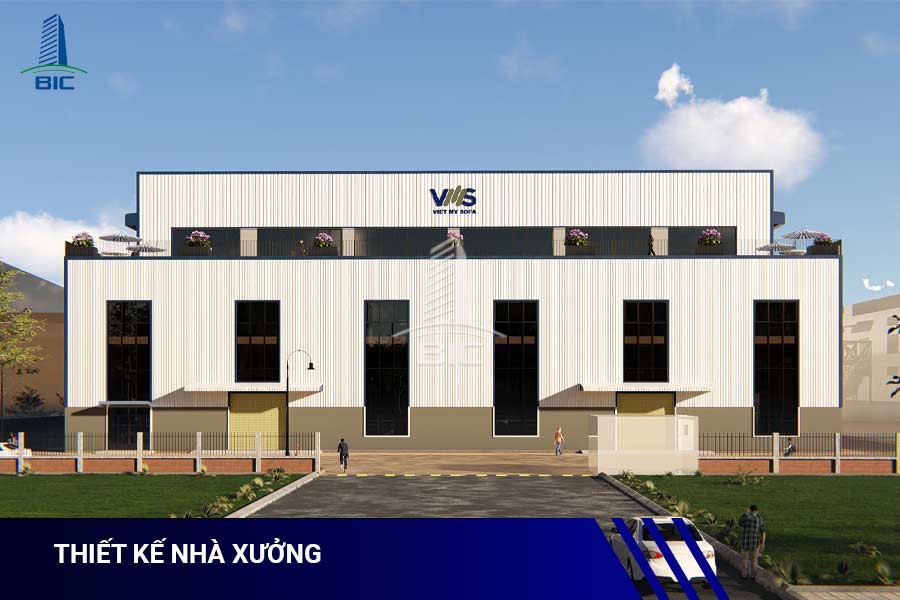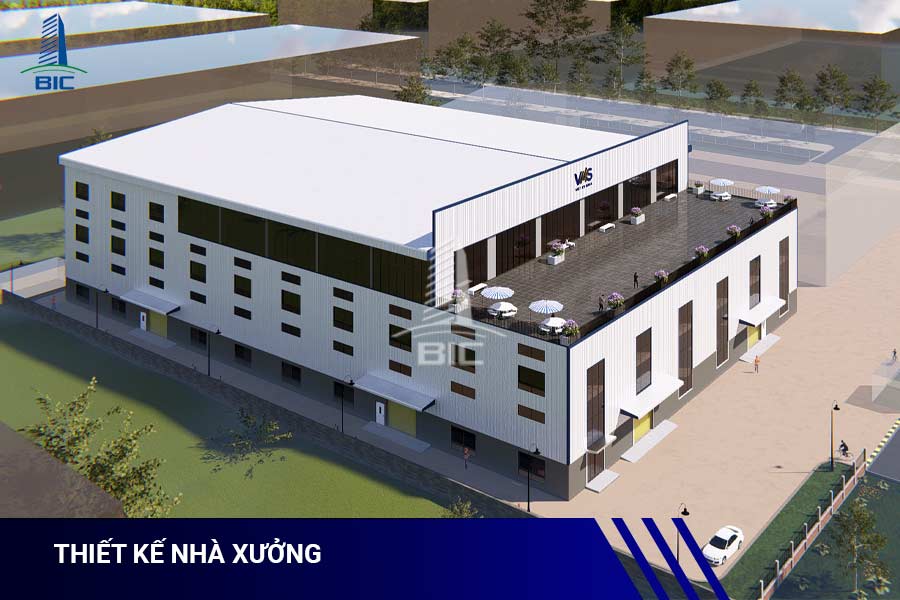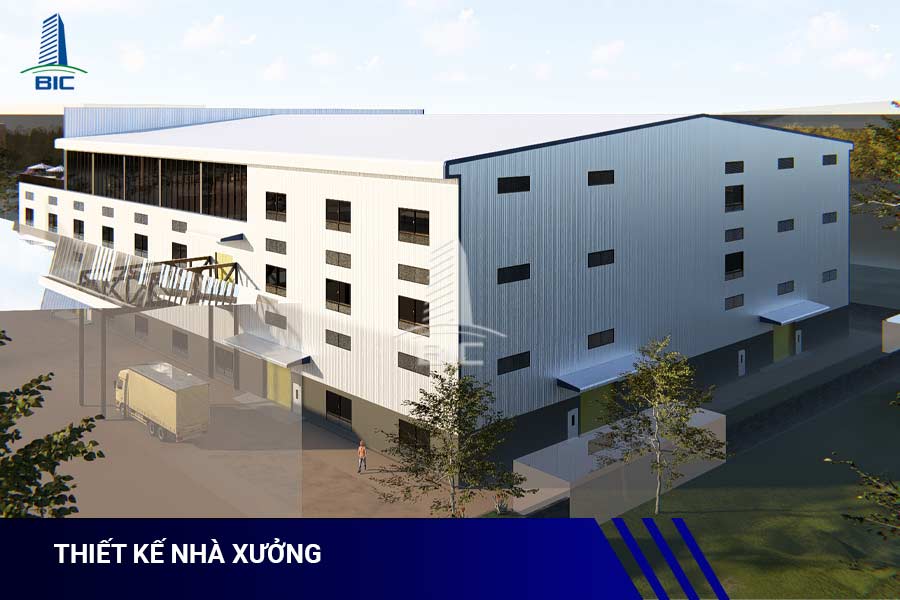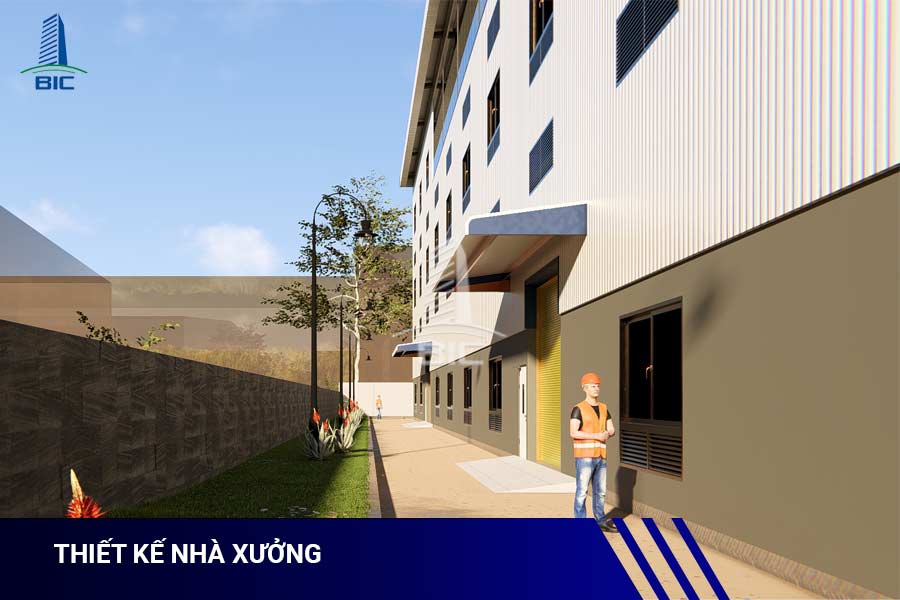
Factory design is not only the starting point of a construction project but also a decisive factor in production efficiency, investment costs, and the building’s lifespan. A well-planned design enables businesses to optimize workspace, arrange production lines logically, ensure workplace safety, and comply with legal standards.
On the other hand, insufficient planning from the beginning can result in high additional costs, reduced operational efficiency, and hidden safety risks. Therefore, choosing the right factory design solution at the investment stage is the foundation for sustainable operations and long-term business growth.
Functionality is always at the core of factory design. The arrangement of production areas, warehouses, administrative offices, and auxiliary facilities must be logical to create a smooth workflow. A smart layout reduces travel time, enhances labor efficiency, and lowers operating costs.
The choice of materials and structure determines durability, investment costs, and construction time.
- Pre-engineered steel stands out for fast construction, easy expansion, and space optimization.
- Reinforced concrete offers long-term durability, fire resistance, and stability.
Businesses must evaluate industry requirements, budget, and expansion plans to make the optimal choice.

Foundation loads, ventilation, lighting, electricity–water systems, and fire protection must be calculated during the design phase. Meeting these technical standards not only ensures safety but also helps businesses save on energy costs during operations.
A factory is more than a production space, it also reflects brand image and corporate values. Design should be modern, harmonious, and aligned with company culture. Planning for future expansion ensures businesses can increase capacity without disrupting current operations.
- Provides clear understanding of requirements and costs from the outset.
- Minimizes budget overruns during construction.
- Speeds up the building process by optimizing materials and assembly.
- Ensures workplace safety, increases building lifespan, and supports long-term productivity.
- Costly renovations and modifications far exceeding initial design costs.
- Non-compliance with safety and technical standards, creating operational hazards and harming business reputation.
- Lack of long-term planning makes future expansion difficult, wasting resources and limiting growth.

The first step to ensuring a strong and safe foundation is proper geological and topographical surveys. Accurate evaluation of soil conditions, groundwater, and surrounding terrain allows engineers to design solutions that prevent settlement, cracking, or unforeseen construction costs.
Beyond initial construction expenses, businesses must also consider long-term operational and maintenance costs. An efficient design reduces capital investment while cutting electricity, water, and system maintenance costs over the building’s lifespan.
The expertise of the contractor directly impacts design quality. Businesses should select partners with strong knowledge of building codes, proven project experience, and full turnkey capabilities to ensure quality, consistency, and on-time delivery.
Factory design must meet all technical standards, especially fire protection, occupational safety, and environmental regulations. Today’s construction trends also emphasize sustainability—such as solar energy, eco-friendly materials, and compliant wastewater treatment systems. These not only improve brand reputation but also reduce long-term costs.

Every factory project must comply with building codes issued by the Ministry of Construction. Among these:
- QCVN 06:2022/BXD – mandatory fire safety requirements for industrial facilities.
- TCVN 2737:1995 – standards for loads and impacts.
- TCVN 5575:2012 – steel structures standards.
Enterprises must secure a construction permit from local authorities before starting. At the same time, fire safety plans must be approved by relevant agencies to ensure legal compliance and safe operations. This is critical for lawful project implementation and to avoid legal risks later.
Factories in food, pharmaceuticals, or chemical industries must also comply with international standards such as GMP, ISO, HACCP. In addition, businesses must submit environmental impact assessments and install compliant wastewater and emissions treatment systems before receiving operational approval. These steps fulfill legal requirements while strengthening brand reputation and customer trust.

An experienced design partner will provide the right solutions from the start. Beyond technical standards, they can advise on functionality, cost optimization, and project scheduling. The right partner ensures peace of mind throughout project implementation.
Many businesses prioritize construction while overlooking design, leading to costly adjustments later. In reality, investing in detailed design from the concept stage ensures better budget control and establishes a solid foundation for construction and operation.
A factory design should not only meet current needs but also account for future growth. Flexible layouts and expansion options save significant time and cost when production demands increase. Viewing design as a strategic long-term investment is the key to sustainable operations.
Effective factory design is not merely a technical preparation, it is a long-term investment strategy. A scientific design helps businesses optimize costs, improve productivity, ensure safety, and fully comply with legal requirements. This is the foundation for stable operations and sustainable expansion in the future.
If you are planning to build or renovate a factory, let experts support you from surveys and design to construction. Making the right decision from the beginning saves significant costs and time while delivering lasting value to your business.
Contact BIC today for a free consultation and optimal factory design solutions tailored to your project